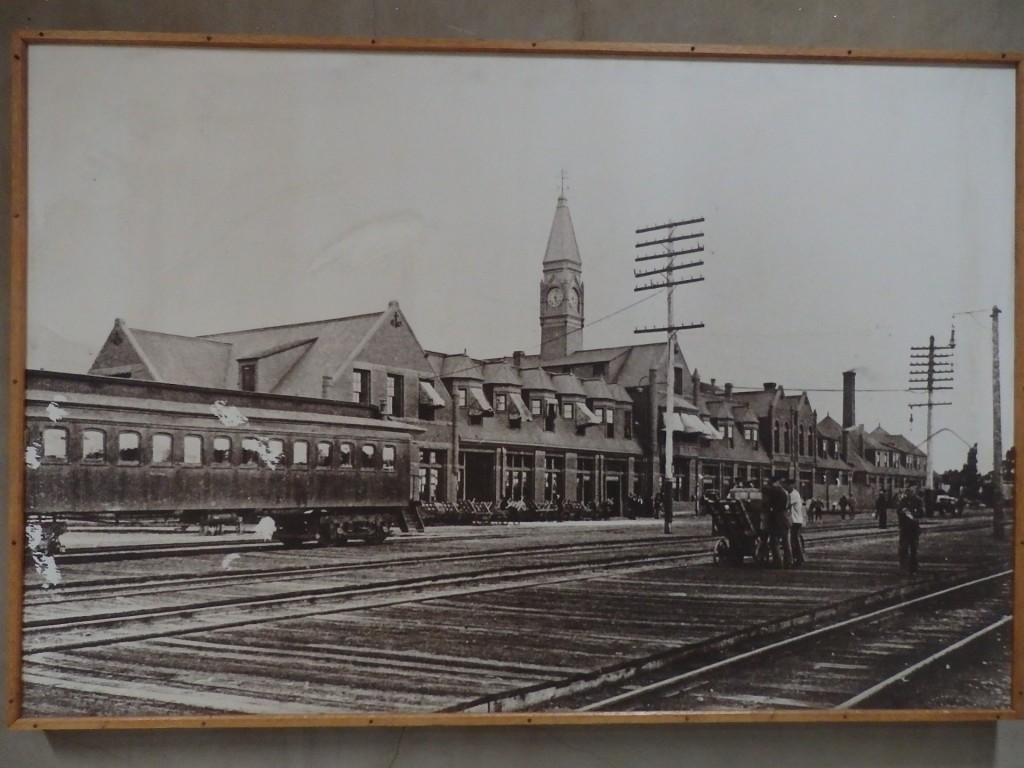Previously: The Crossroads of the West
Little Cottonwood Quarry
I hiked to these ruins and found an old wall along the creek that I assumed was used to divert water for the power plant:
Back at the temple quarry trail (a few miles further down the canyon) I found what looked like the ruins of an old dam, again probably tied somehow to the power plant or used as a water source for the town of Granite (a small town at the mouth of Little Cottonwood Canyon). There is no information on these ruins:
We can see two granite blocks loaded on the wagon. Out of the five men, we can only see one face, and he looks confused. We're told that the 20-mile trip from the quarry to the temple site took four days, yet we don't see any camping provisions loaded onto the wagon.
...we used to load the smaller stones on wagons, but the big ones we hung under them. We'd been having a terrible time. The rocks were heavier than most men thought, and many a wagon broke down. Then one day a brother of Bishop Sharp drove up there with a whole string of heavy freight wagons. Some three and three-quarter Schetler and some high-wheeled government ones. On those high-wheeled wagons they put two long red pine logs and chained them to the front and back bolsters. Then when the men had a rock ready the loaders would put some red pine rollers, about six inches through and five feet long, under this rock, and with smaller poles as levers, they would roll it to where the wagons could be loaded. They would get a wagon astraddle this rock, dig some holes for the wheels, and sink it till the top of the rock touched the bottom of the logs. Then they would chain it in place and when the oxen started, the poles under the rock would roll a little, and as soon as the wheel got out of these holes the rock was swinging free under the logs. ("Temple Recollections," The Improvement Era, April 1943)
Well that's about the most awkward loading method I've ever heard. But remember, it is by design that these narratives are full of seemingly impossible feats. It's all part of the myth and lore that surrounds these stories. A nameless man, who was a mere boy at the time, describes what seems impossible to us, instilling reverence and awe for something that we have no proof actually happened.
The old-timer mentioned oxen. If the Sharp brothers were running 15 wagons at a time than they would have needed at least 60-90 oxen to haul them. However, there are no photos of oxen at the temple quarry or on the trail. One of the few photos showing oxen is found below:
This is the temple construction site in 1877, five years after the railroad was laid in Little Cottonwood Canyon, when we're told that a rail spur was already going directly to the temple site. At this date in 1877, there would have been no need for oxen and wagons. Yet, we don't have any photos of oxen and wagons during the 1860s when we're told there was no railroad. This image is found at the BYU digital collections library. Click here to see the details, including the date.
Here are a few more photos of men "working" in the quarry from the Church History Catalog website. You can decided for yourself if they look real or not:
When you first enter the canyon, just after you pass the temple quarry interpretive trail, there is a group of boulders on the left that also have chisel marks on them. Here is a photo I took of them:
Don't they kind of look like the boulders from the historic photos above?
Now, what about the journals of men working in the quarry? What do we actually have in the historical record?
Actually, not much.
Let's start with James A. Muir.
Well, we don't exactly have a journal from Muir, we have a short life sketch, written down and published in 1945 by Muir's descendants. It's literally only a few typed up pages. It claims that Muir went to work at the temple quarry in 1870 at the age of eleven, but by 1873 "the quarry was forced to close because of financial conditions."
(After this the life sketch claims that Muir went to work as a teamster hauling dirt out of the ZCMI building basement. Are buildings built and basements added later? This is reminiscent of the Tabernacle basement.)
This is a huge discrepancy in the narrative, because we're told that 1873 was the year the Wasatch and Jordan Valley Railroad was completed, the railway that ran up Little Cottonwood Canyon directly to the temple quarry.
This line was seven miles long, and was (of course) built during winter. Ground was broken on November 4, 1872, and the last piece of iron track arrived on January 6, 1873 (how did they grade and lay track on steep winter snow pack in a canyon known for dangerous avalanches?). On April 4, 1873, we're told that Brigham Young rode on the train as the first granite block was delivered to the temple on the new rail line.
Even though Muir's descendants claim that the temple quarry was shut down in 1873, Wallace A. Raynor, author of Everlasting Spires, claims that in 1873 nearly 9 million pounds of granite was delivered to the temple site. Each trainload handled about 60,000 pounds of granite and two trainloads per day were brought down the canyon to Sandy Station, loaded onto the Utah Southern Railroad line, and delivered to the temple.
I wonder how workers in a quarry that was closed down could keep up with demand? Even if Muir's biographical sketch is wrong and the quarry remained opened during 1873, how did 30-40 men working with hand tools (sledge hammers, stone point drills, slips, wedges, etc.) produce nine million pounds of roughly-shaped granite in a single season? That's around 225,000 pounds of granite per working man. If the working season was 9 months long (omitting winter), that's over 1000 pounds of granite per man, per day (omitting Sundays). Was that even possible?
Historians also tells us that there was a "temple spur," or rail line built directly from the Utah Central Depot to the temple construction site. This was built in 1872, one year before the line in Little Cottonwood Canyon was completed. The only photo I can find of the temple spur is shown below.
Are those tracks running through the center of the walled area? If you zoom in on the photo it is very hard to tell what you're looking at.
In the year 1870 I was again sent out with my men to work at the granite quarry quarrying rock for the Temple and from that time until the capstone was quarried I was in full charge of the temple quarry. While quarrying rock for the temple we had a beautiful resort in the mountains known as Wasatch. Here the leading men of the Church had summer homes where they lived with their families during the summer months. I became very well acquainted with these good people and enjoyed their society very much. (James C. Livingston, autobiographical sketch, Church History Catalog)
The "resort" Livingston mentions here was also known as Granite, an unincorporated settlement in the mouth of Little Cottonwood Canyon. People still live there today. However, there are no surviving buildings or ruins from any of these supposed summer homes constructed by Church leaders. The oldest building still standing today is the Granite Chapel, constructed in 1904. View it here.
Next we have Bishop John Sharp.
Sharp was born in Scotland in 1820. At the age of 8 he apparently went to work in the coal mines (dangerous work for an 8 year old) and in 1847 he met an LDS missionary and was baptized into the Church. He emigrated to Utah in 1850 and went right to work for Brigham Young quarrying rock in Red Butte Canyon. He was made superintendent of the quarry.
As you may recall, the original temple foundation was made of red sandstone from this quarry, but was later found to be defective and replaced with granite. Read this post and that post to review the discrepancies and anomalies in the foundation story.
As the story goes, most of the LDS labor force in the quarry was assigned as service work by local wards. Just like the railroad story, workers remain mostly unnamed and undocumented. The same story is told for both the Red Butte and granite Temple quarries: around 30-40 men remained on site and worked six days a week for 8-10 hours a day. These men were mostly emigrants from England, Wales, and Scotland, working to pay the Church back for their passage to Utah and earning money to bring their families to the Territory.
In 1860 John Sharp and his brother were given the contract to haul granite from the new quarry in Little Cottonwood Canyon. We're told that they had sixty heavy duty wagons and that teamsters were assigned service work from various wards. Sources for this information comes from letters of correspondence between Sharp and Church leaders, the temple account book from the Church Historian's office, and the Deseret News. Strangely missing from the official sources are contemporary entries from John Sharp’s journal.
One of the earliest books covering the Salt Lake temple construction and the quarries was written by Wallace A. Raynor in 1861. It was first published as a master's thesis and then subsequently republished in the book Everlasting Spires. You can read the thesis here and check the sources for yourself, neither Sharp's nor Livingston's journal shows up in any of the sources. If you try to search for them on the Church History Catalog nothing comes up.
An interesting sidenote on Raynor is that in his master's thesis he comments in a footnote about a photograph of men working in the temple quarry, stating, "This picture is obviously a posed shot. The quarrymen never worked in such close proximity and please note the hammers" (History of the Construction of the Salt Lake Temple, p. 81). Raynor omits this footnote in Everlasting Spires.
The photo below is the original one from the master's thesis. Note that some men aren't even holding hammers and appear to be striking the drills with small rocks. Also notice the background, it appears to be a painted backdrop, not an actual shot of real mountains. Look closer and refocus your eyes and you'll notice that the depth perception is off. It feels like we're looking at a display in a museum, with lifeless figurines placed against a two-dimensional background painting. Notice the granite blocks appear suspiciously smooth and homogenous, almost like plaster. Real granite boulders found in nature are jagged, irregular, and chaotic.
Also notice the familiar shapes of a triangle on the left and a square on the right. Why would they go to the extreme effort of forming such large pieces of granite into these near-perfect symmetrical shapes when they needed to produce much smaller square blocks? Granite blocks are not found naturally occurring in these shapes.
Is this a Masonic signature, a staged portrait showcasing a compass and square hiding in plain sight?
I find it interesting that the two most famous men associated with the temple quarry have surnames that have are synonymous with cutting stone: Sharp and Livingston. Sharp is Old English and means shrewd, keen, or cutting, and the Scottish name Livingston literally means settlement, or living stone, or in Old English, "in this parish there formerly stood an ancient stronghold."
Is this yet another AI-generated clue in the narrative that Salt Lake City was once an ancient stronghold?
Next we have Leonard John Nuttall, who actually did mention the temple quarry in his journal, a portion of which has been digitally archived and is available online. Between 1879 and 1892 Nuttall mentioned the temple quarry 8 times. He offers little detail except that some men were in disagreement on wage rates for labor, and that there were some 40 or 50 workers in the quarry on July 4th of 1889 when he and Joseph F. Smith took a train up the canyon. He commented that at 11 AM he and Pres. Smith saw some quarrymen "split open a large rock which was very nicely done". Read the journal here (type "quarry" in the search bar).
Keep in mind here that Nuttall was not a quarry worker, he was a secretary for Church leaders, as well as a member of the Council of Fifty. In other words, he was an insider and, in my opinion, not a man we can trust to tell the truth.
Again I ask: where are the journals of the hundreds of common men who worked at the granite quarry over the 32 year period? Whoever they are, they remain silent on the matter.
Finally, we come to William Kuhre, who in 1959 claimed that he was an eleven-year-old boy when he first began to work in the temple quarry. He was 97 years old in 1959 when he was interviewed by Wallace Raynor, which means he would have begun working in the quarry in 1873.
William Kuhre was an orphan. In 1865 the Ute chief Black Hawk led a group of warriors on a cattle raid and slaughtered Kuhre's entire family, sparing the young 3-year old William. Apparently, he was taken in and raised by the Livingston family. Allegedly it was Kuhre who had the dictated biographical sketch of James Livingston in his possession before it was taken into Church archives.
The Church History Library has Kuhre's "Salt Lake Temple Recollections" in its archives. It is a photocopy of a typescript on microfilm. It has been recently digitized and they allowed me to view it after I sent a request. It is undated, and Kuhre gives little detail about the quarrying process. He talks about the Jordan Valley Railroad, the cookhouse, and how the quarry site kept moving further up the canyon.
Kuhre also reminisces about Old Granite City being full of saloons, stores, and homes, and even quotes an excerpt from James Livingston's life-sketch. He offers a lot of detail on the cookhouse and the food served, but again, little on the quarry work. Kuhre claims that his job was to carry sharpened drills to the quarry workers, and that some boulders for the temple were taken from "well up on the mountain side towards the cliffs" (which contradicts the official narrative). He also stated he was paid $1.50 per day and that the men received $2.50 per day. Other than that, he offered some detail on the Jordan Valley railroad and tells a few stories about some of the men.
I wonder what happened to the transcript of Raynor's interview of Kuhre in 1959. I also wonder about the veracity of interviewing a 97-year-old man. My grandmother lived to the ripe old age of 96, and although she never had Alzheimer's, she often didn't know who I was during my visits to her nursing home the last few years before her passing.
Can we trust an undated "recollection", or an oral testimony of a man recalling events that happened 86 years earlier? Where is the contemporary evidence for what Kuhre claimed about the quarry? Did he not write anything down during the 1870s or 1880s when he claimed to be working there? Did he keep a journal? If so, where is it?
This pattern of using post-dated oral and written testimony as primary sources for events that happened decades earlier is commonly used by LDS historians. I know many of you question the affidavits (written 30-40 years later) that were used to frame Joseph Smith with introducing and practicing polygamy in Nauvoo during the early 1840s. Should we not apply that same logic to question other aspects of Church history?
Derricks, Rising Stone Walls, and Air Trains
When the four new derricks were moved into the Temple building, one was placed in each corner tower. The mast was held upright by guide lines anchored to the ground and to the top of other masts. A long jib pole was connected to the mast level with the hoisting platform. This platform was movable and was either shimmied up the pole or reconstructed as the walls approached the level of the boom...
Evidently, only one hoisting engine was used to operate all the derricks in the early years. A tourist passing through Utah in the fall of 1877 wrote in regards to the Temple that "They build entirely without scaffolding by means of a small portable engine inside, which works lofty cranes with jibs of such length and strength as to pick up the heaviest stones outside and deposit them on the walls." (Raynor, History of the Construction of the Salt Lake Temple, pp. 140-141)
I find it strange that if such an "engine" existed, the only sources describing it are a traveling tourist and the Deseret News (according to Raynor, it was reported on August 17, 1877). Where are the Church financial documents verifying the purchase of this engine? What about contemporary journals of the men who were running and moving the portable engine?
The only other source I found of this "engine" was in Mark Henshaw's book, Forty Years: The Saga of Building the Salt Lake Temple. He describes it as "an eight-horse-power steam engine," and cites as his source a Deseret Evening News article from a year earlier, August 16, 1876, entitled, "The Temple."
What are we to believe? Did this granite-hoisting steam engine really exist? If so, you'd think there would be a photograph of it. Remember, the camera was invented in 1816, long before Utah was settled. Let's take a look at some "construction" photos of the Salt Lake Temple in chronological order and see if we can find this engine. We'll start in 1873:
The steam engine wasn't used until 1876 or 1877, but this photo gives us a starting point. Note the wooden derricks in the upper left. Do you see the two cables that seem to be going up to the left above the derricks? Where are they going? Where one of these cables crosses the tabernacle roof it appears to be partially erased. Has this photo been tampered with? Have those cables been drawn in? Also note the small tower in between the Tabernacle and the building on the left that looks like an obelisk. What is that?
Here in this 1874 image the derricks are missing, and the blocks seem disorganized compared to 1873. Also note that the building on the left is gone and there is a new building on the right. The wall and trees on the right of the Tabernacle shown in the 1873 photo are missing. Are they actually making progress? And why is there a rope coming straight up out of the roof of the Tabernacle? Notice that the obelisk is also missing.
Here is an 1876 shot of the derricks, yet no steam engine.
Here we can clearly see the derricks and still no steam engine. The building looks out of proportion, and the derricks have been moved towards the center of the building away from the corners. This contradicts the written narrative (that one derrick was placed in each corner tower).
Here in this 1878 portrayal we actually see a derrick lifting a block of granite, but again no steam engine. Where would they have kept this engine? Remember, they had to move it from one side of the temple to the other so they could use it with the different derricks. What kind of mechanical apparatus is hidden between what we can see and the bottom of the inside of the temple? Did the steam engine use a system of pulleys somehow attached to the jib and mast of the derrick? However it worked, we're not told, and we're never shown the inside of the empty temple. Shouldn't we find this suspect?
In this 1881 rendition, we see essentially the same thing, with the temple walls a little higher. The derricks seem smaller, and all of the cables seem suspiciously hand-drawn into this image. Look towards the right of the photo and you'll see a major anomaly: a jagged line that appears to be a conjunction where two photos were merged together. Notice the cable lines at the very top and middle of the jagged edge don't line up. Where are these cables going? Why would they need them to extend that high and far away from the temple?
Finally, we have this undated photo above. Again we can see a single piece of granite being hoisted. We see derricks but no steam engine. And if you look to the left of the image you can see a small derrick (looking far away) on the roof of the tabernacle. What kind of sense does that make? Obviously, this has been drawn in. And again, there seems to be too many cables going in too many directions. What is the logical use of all these cables?
In 1878, when the walls were about forty feet in height, a new hoisting method was tried. The granite stones were loaded on a small truck and were run on an iron tramway along an elevated platform adjacent to and level with with the height of the walls, placed on another small truck and conveyed to the east or west end of the building, and then lifted by the derrick and set in position for the masons. (Ibid, p. 142)
What in the world did we just read?
Train tracks installed forty feet high on an elevated platform in the center of the temple?
How was this platform constructed and of what material? How did the steam engine hoist the granite blocks 40 feet up and into the rail trucks? How were these trucks conveyed around the building? Did the men have to physically push them around the tracks? Were they electrically powered? Was the steam engine connected to some apparatus that pushed the trucks around the tracks?
We are not given any details about this mysterious air train. The only source for this story comes from the Deseret Evening News (May 23, 1877); no journals, no photographs, and no financial documents. Can we really believe this story?
This is not the first time I've heard of a train track being built several stories up inside the skeleton of a building under construction. The same story can be found in the narrative of an Old World cathedral in Salt Lake City: The Cathedral of the Madeleine. Here is an excerpt from a book written on the construction of the cathedral:
...A crane swung the huge stones upward to ever more vertigo-inducing heights, where they were transported to their proper place by carts on a railroad track. (Gary Topping, The Story of the Cathedral of the Madeleine, Kindle Version. Loc 389)
Looks like the AI repeated itself again.
Remember, the Salt Lake Temple was claimed to be a hollow skeleton before 1889, and the only feasible way to build a train track at a height of 40 feet would be to construct some sort of trestle bridge. This seems like a total waste of time and resources when the derricks were already in place and being used to swing the blocks around the walls of the temple.
If this track existed, why are there no photos of it? Why is the only documentation of this train track found in the Deseret News? Where are the journals of the men who built and used this elevated track? Again, we come up empty-handed here.
Let's move on to the stone masons.
Shouldn't we be swimming in first-hand contemporary documentation proving that hundreds of skilled masons toiled for forty years on the temple?
Well, as it turns out, we seem to be swimming in an empty pool.
Tales of Master Masons
The first two master masons we hear about in the story of the Salt Lake Temple are Edward Lloyd Parry and Alonzo Raleigh.
It is claimed that Parry laid the first stone in the basement story under the direction of mason foreman Raleigh. This was done in the N.E. corner on June 18 of 1857.
The source for Parry's role in the temple comes from a short autobiographical sketch dictated by Parry in 1895. His descendants have a "copy of a copy" of that sketch and recorded it in the book, The Life of Edward Lloyd Parry, published in 2011. There are no contemporary journal entries available from Parry describing his work on the temple.
Alonzo Raleigh was the first foreman over the stonemasons and was supposedly responsible for the original defective foundation. I wrote about that here. There is a digitized journal available from Raleigh that you can read here, but entries about his work on the temple are brief and few. He says nothing about the defective foundation.
Another famous stone mason is James Moyle and his father John Rowe Moyle. There is a story about John losing a leg, being fitted with a peg leg, and walking 26 miles on it to work on the temple (even though he could've easily taken a train). This story has been told in general conference a few times. Supposedly it was John who inscribed "Holiness to the Lord" in the stone above the temple door. Read this blog post to find the inconsistencies in the account. The story about the wooden leg is a reminiscence told by John's great-grandson, decades after the fact.
James Henry Moyle was the "boss" stone cutter from 1871 until his death in 1890, overseeing the 90 to 150 men working on temple walls each day. He died prematurely before seeing the temple finished, following the pattern of many architects and "master" builders before him. He was only 55 years old. There is no public journal available with entries describing his daily work on the temple during those 19 years. There are "biographies and reminisces" available at the Church History Library, but you have to be onsite to view them.
The Spiral Staircases: A Million Pounds of Granite Enigma
The winding stairways in the four corner towers are composed of granite steps. There are one hundred and seventy-two in each tower. The stairs are divided at convenient in the ascent by four landings. The steps are built in the walls, a hollow granite shaft being constructed in the center of the tower to receive their inner ends. Each step is six feet long, three inches of either end being fastened in the supporting walls. The width is five inches at the narrow end and twenty inches at the broad end, and the height is six and a quarter inches.
These steps are cut to conform with the curve and spiral ascent, and are so fastened at the ends in the groove prepared for them as to make it impossible for them ever to yield or slip from their position. The tread projects over the main portion of the step about an inch and a half. The cutting of the stones is accurate, and for uniformity in appearance and substantial construction these spiral stairways are unexcelled in the world. Each step weights over seventeen hundred pounds; the aggregate weight of the steps in the four towers being more than a million pounds. ("The Salt Lake Temple," p. 277, emphasis added)
The article mentions "a hollow granite shaft." Wallace Raynor refers to this shaft as a granite colonnade that "extends from the foundation to the top of the square" (p. 148 of his master's thesis). To find the approximate height of the colonnade, all we have to do is multiply the height of the stairs by the total number: 172 x 6.25 inches equals 90 feet.
Nowhere in the written history or in any documentation do we find how four granite colonnades 90 feet tall were constructed and placed in each tower. There is no mention, anywhere in the historical record, of how each 1,700 pound granite stair was cut, shaped, and hoisted into place in each of the four towers. Even more mysterious, is the fact that the colonnades were hollow. How in the world did stone masons construct a hollow granite shaft upwards of 90 feet tall?
Wallace Raynor also commented on these staircases in his master's thesis. He went to the temple and made personal observations and measurements. He must've been allowed to do so. He offers some details not found in the Contributor article:
In the center of each of the four corner towers there is a granite colonnade which extends from the foundation to the top of the square. The diameter of the colonnade is six feet with a two and one-half feet circular opening in the center. There are one hundred and seventy-two stairs, that wind around each of these granite colonnades to form four beautiful and massive granite winding stairways.
The steps are imbedded in the side walls of each of the corner towers and are cut so as to conform with the curve and ascent of the newel. Each step has been cut in one solid piece and is five feet three inches long, six and one-half inches high, twenty-one inches wide upon its setting in the inner wall of the tower and nine inches at its niche in the newel, and overlaps approximately one and one-half inch in such a manner that it cannot move or be moved without breaking the masonry. (History of the Construction of the Salt Lake Temple, p.148)
How was it possible during the 1880s to hand carve a massive granite colonnade 6 feet in diameter, with a 2.5 foot hollow center, extending 90 feet in height?
This means that the wall thickness of the colonnade was around 3 feet thick. For the stairs to fit perfectly in between the tower walls and colonnade, these granite materials had to be carved in perfect symmetry. To maintain this symmetry all the way up a 90-foot climb would've been extremely difficult with primitive hand tools combined with the propensity for human error.
Although we're not told how it was built, it makes sense to me that the colonnade would have to formed in individual pieces stacked upon another, and then secured with mortar. I'm not even sure how an advanced civilization (with anti-gravity technology) could construct a colonnade this large and move it into place unless it was built in pieces.
Hypothetically speaking, if each piece of the colonnade was 3 feet heigh, this would've required 30 individual pieces for each tower, or 120 pieces total. Carving a square piece of granite is one thing, but to carve a perfect cylindrical stone with an exact cylindrical hollow center with hand chisels would've been quite a feat. And then to repeat the process 120 times making sure each piece matched the rest with precision and exactness would've been, in my opinion, impossible without advanced machinery.
Just think logically for a moment about the shear volume of granite that had to be carved out of the center of the colonnade. This, in my opinion, would've taken years and years. But we are not given a timeline for these staircases, or even a single word about their construction. All we are given is a description.
And what was the purpose of these hollow granite shafts extending from the basement to the tops of the walls of the temple? Did they serve some ventilation or drainage purpose? Was it some kind of technology that we are not being told about? Why go through all the work to make these massive colonnades hollow?
One plausible explanation is that these colonnade pieces were constructed off site in a factory with an advanced technology that somehow melted granite down and shaped it into cylindrical form. To maintain the perfect symmetry of the spiral staircases the colonnades and individual stairs would have to be cut out or formed with the same precision we see with modern CNC (Computer Numerical Control) machining used in various industries today (i.e., woodworking/carpentry, automotive parts, medical equipment, electronics, aerospace, etc.).
Could 19th century human hands really maintain the same precision as modern CNC technology?
I, for one, don't buy this story. There is so much we are not being told, and the real question is why--why would they lie about history and claim to have built things they did not build?
What could they possibly have to gain--money, power, control, or something else?
Hiding Behind a Refuge of Lies
Some time ago Rock Waterman published a post entitled The Drunkards of Ephraim, in which he quoted a chapter from a book written by J.J. Dewey, entitled, Infallible Authority. I'm not endorsing J.J. Dewey or his books, but I find this particular chapter on the Drunkards of Ephraim interesting in light of my current research on the history of Utah.
The phrase the Drunkards of Ephraim was coined by the prophet Isaiah, who in his writing seems to use the past history of Israel as a typology for future prophecy describing the fate of the modern Gentiles and the future gathering of Israel. Isaiah seems to subtly oscillate between the past and future with such ease that it is difficult to know which one he's referring to at any given time. I believe this is why Nephi said that we won't understand Isaiah's prophesies until after they have come to pass.
But what are to make of the group of people Isaiah calls the "Drunkards of Ephraim" who wear a "crown of pride"? Is he referring to the past religious leaders of the Jews or the modern leaders of the LDS Church?
Or both at the same time?
Woe to the crown of pride, to the drunkards of Ephraim whose glorious beauty is a fading flower, which are on the head of the fat valleys of them that are overcome with wine. (Isaiah 8:1, RE)
Many Latter-Day-Saints come from the lineage of Ephraim, however, the lay-members aren't wearing any crowns. I believe the "crown of pride" may be referring to some kind of elite blood line found specifically in Church leadership circles. I wrote about the lineage of Brigham Young here.
If the drunkards of Ephraim are the Latter-Day-Saints, including other breakoffs like the RLDS (now Church of Christ) and the Fundamentalists, then how is their glorious beauty a fading flower? And how are the fat valleys (of Utah?) overcome with wine?
Was that "glorious beauty" nothing but a skewed perception of an institution's history? A history full of undocumented stories about toil and sacrifice, impossible construction feats, and the building of a beautiful city in record time?
Is the "fading flower" describing a history once respected by the masses but now being discovered for what it really was?: the abuse of women in the polygamous system, the murders committed by Brigham Young's hired henchmen, the covering up of crimes like pedophilia, the hiding of history that isn't "useful" to the Church authorities, etc.
A few verses later Isaiah calls out the wicked religious rulers of Jerusalem, and then seamlessly transitions into a future prophecy targeting another group of people who make lies their refuge:
Wherefore, hear the word of the Lord, you scornful men that rule this people which are in Jerusalem. Because you have said, We have made a covenant with death, and with hell are we at agreement; when the overflowing scourge shall pass through, it shall not come unto us, for we have made lies our refuge and under falsehood have we hidden ourselves--therefore, thus says the Lord God: Behold, I lay in Zion for a foundation a stone, a tried stone, a precious cornerstone, a sure foundation. He that believes shall not make haste. Judgment also will I lay to the line, and righteousness to the plummet; and the hail shall sweep away the refuges of lies, and the waters shall overflow the hiding place... (Isaiah 8:4, RE, emphasis added)
Isaiah turns his attention to the future Zion, the place of the New Jerusalem, where the foundation stone, the true cornerstone, will be Jesus Christ. Here in this city, "judgment will be laid to the line, and righteousness to the plummet", a phrase used by Brigham Young right before the 1858 Mormon War broke out.
Young did not mean what Isaiah meant. He used the phrase as a threat to those who might apostatize from Mormonism--from his own dictatorship. But we've also seen the phrase used in Freemasonry, sometimes in connection with the ritualized cornerstone ceremony.
Each building narrative has a story about a cornerstone ceremony, always performed at high noon, the same time when Hiram Abiff, the mythic hero of Freemasonry, was murdered by the three ruffians in Solomon's unfinished temple.
This is not a coincidence. It is my belief that it was Abiff who is being honored in these rituals that were performed on early Utah temples, not Jesus Christ. Isaiah is setting the record straight. He is telling us that the cornerstone is symbolic, not literal, and that it represents Jesus Christ. He is the sure foundation, not some building, and not some Masonic myth with esoteric ties to ancient Mystery Schools.
More importantly, Isaiah tells us that at some future point the refuge of lies shall be swept away, exposing the falsehoods of those in power. This is not something any of us can do, it is the Lord's work, and it cannot be hastened. He will do it in His time and in His way.
Join me next time for a deep-dive into the capstone ceremony and history of the construction of the temple interior--or the lack thereof.

.jpg)
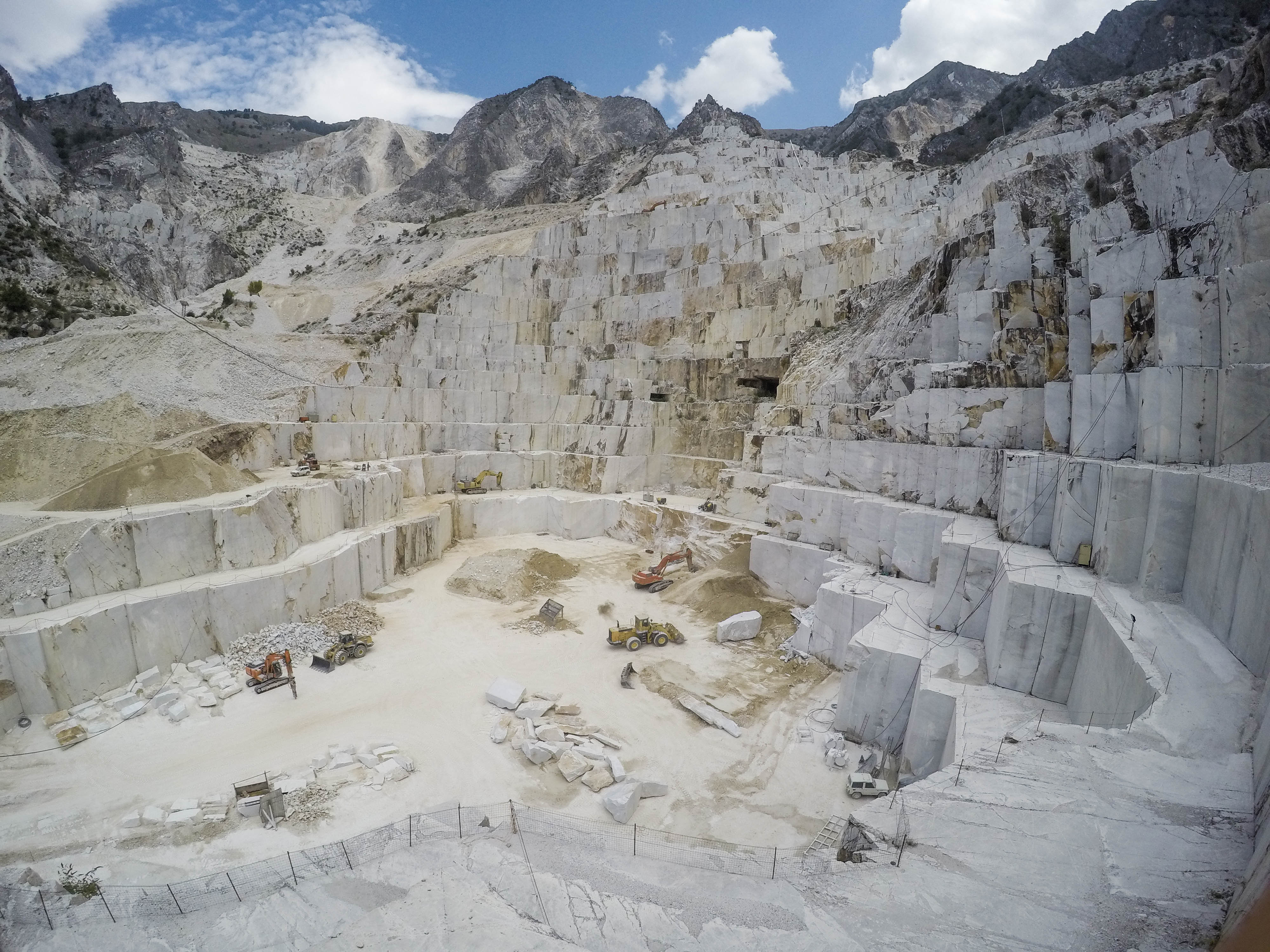
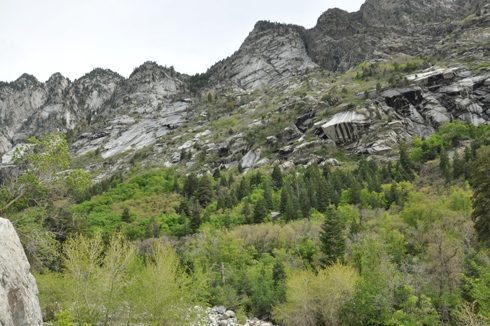


.jpg)












.jpg)


.jpg)
.jpg)

.jpg)
.jpg)
.JPG)
.jpg)




.jpg)










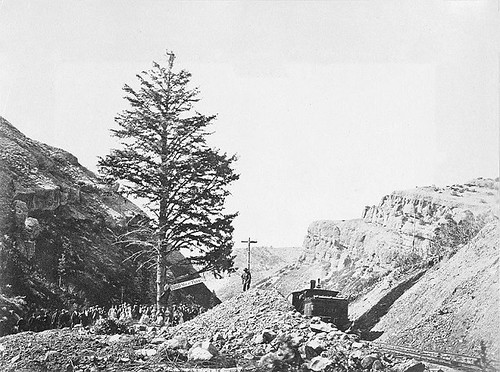
.jpg?mode=max)
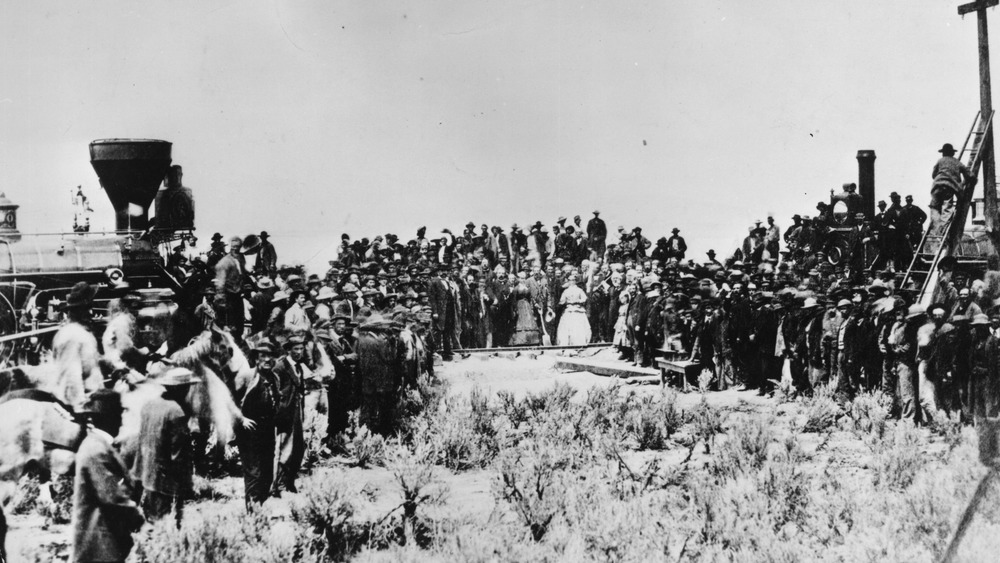
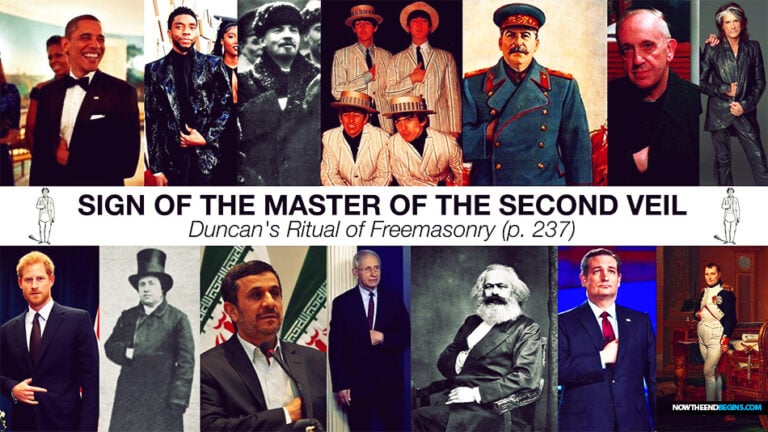
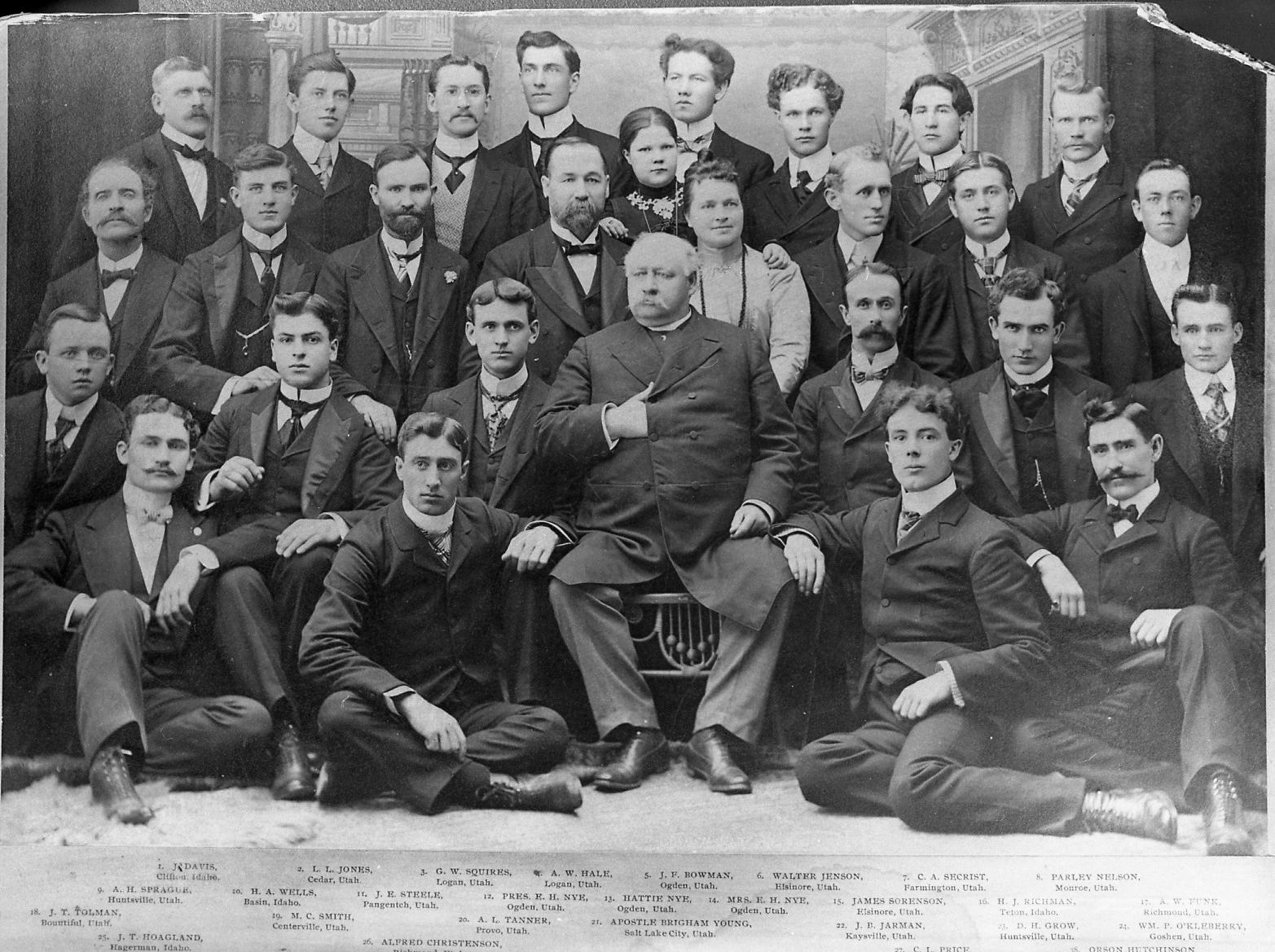
.jpg)


.png)
.jpg)
_p836_OGDEN%2C_UNION_RAILWAY_STATION.jpg)
